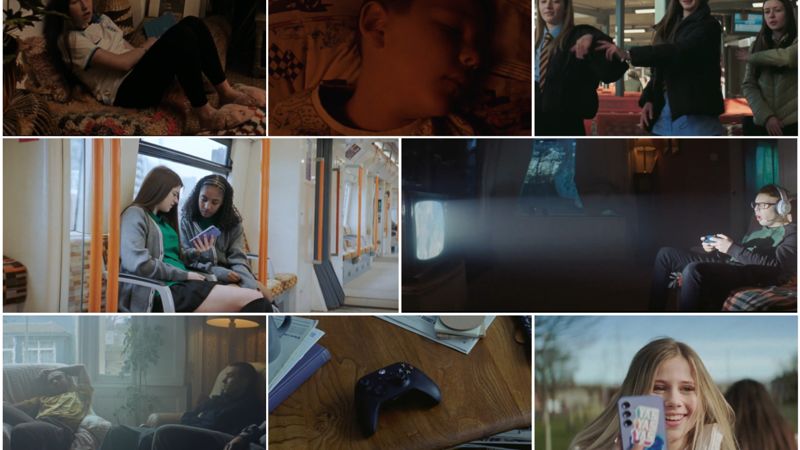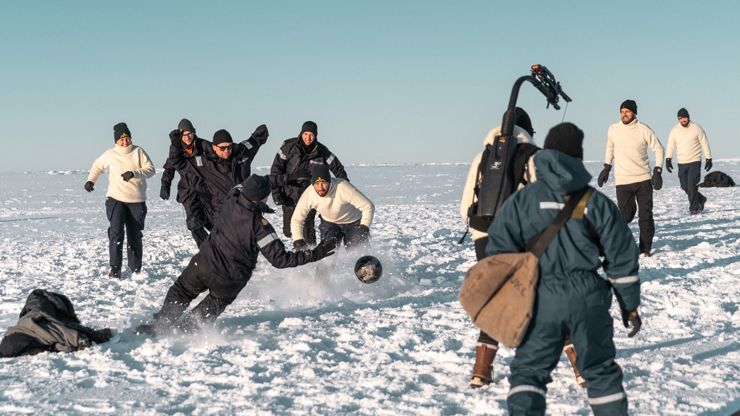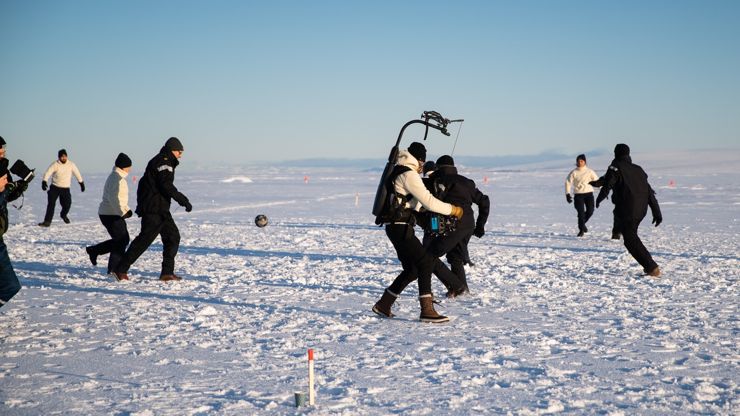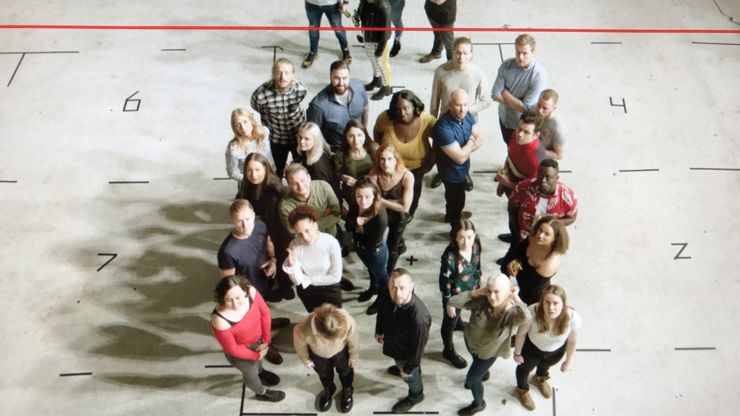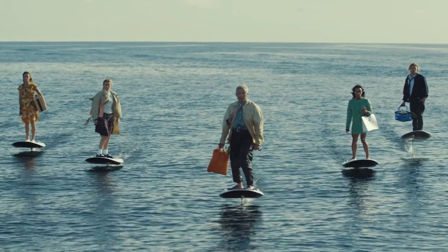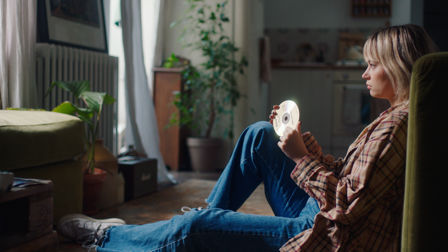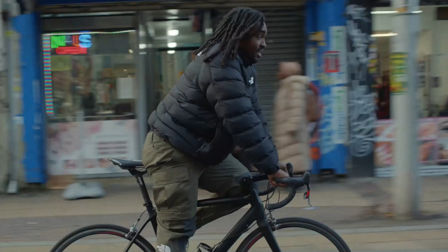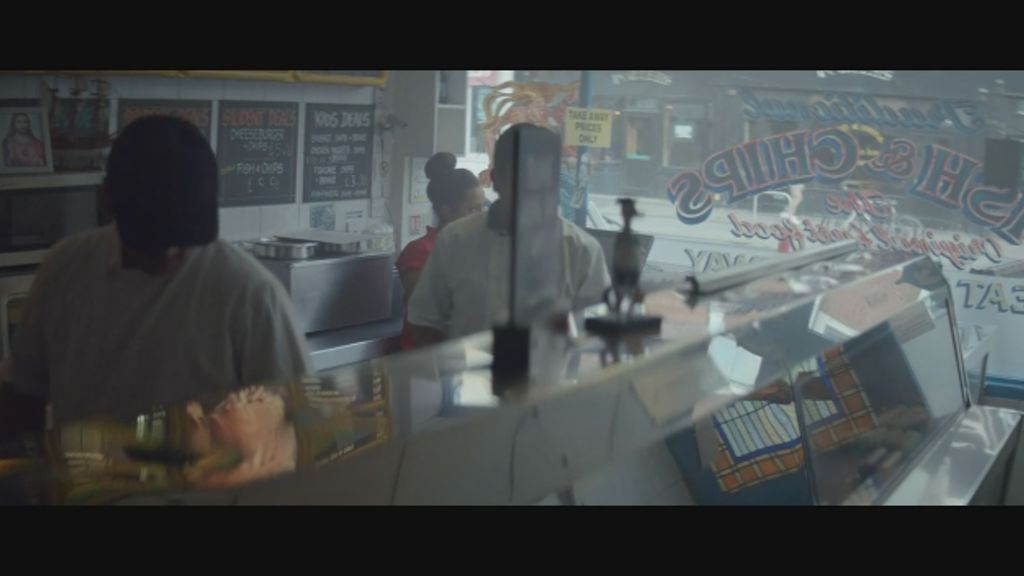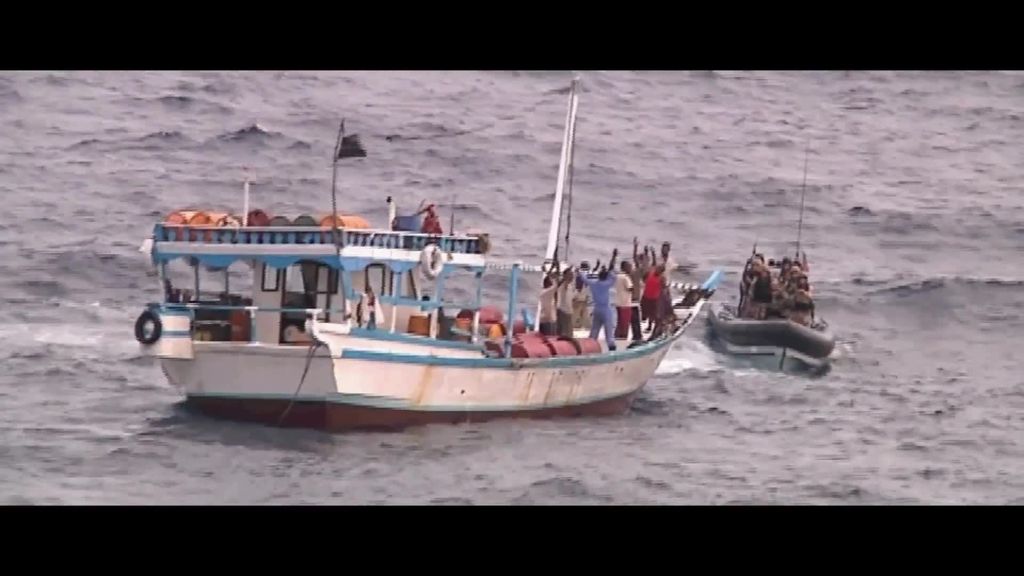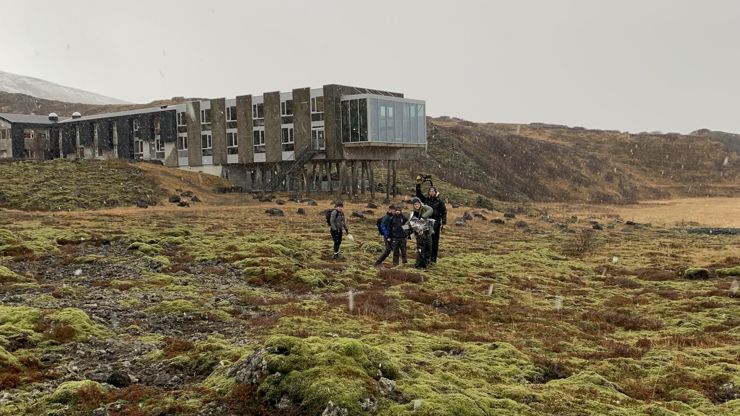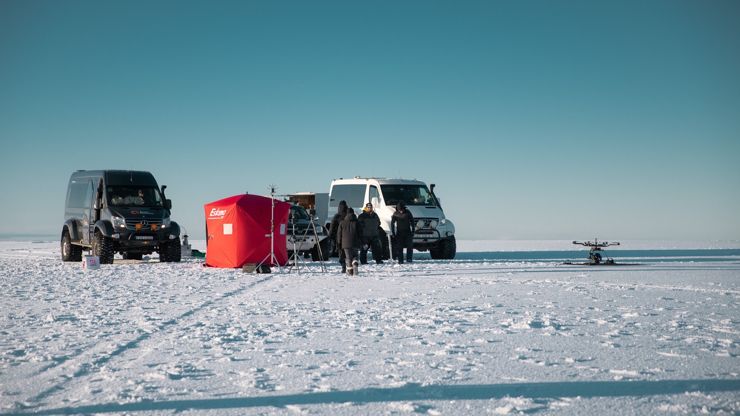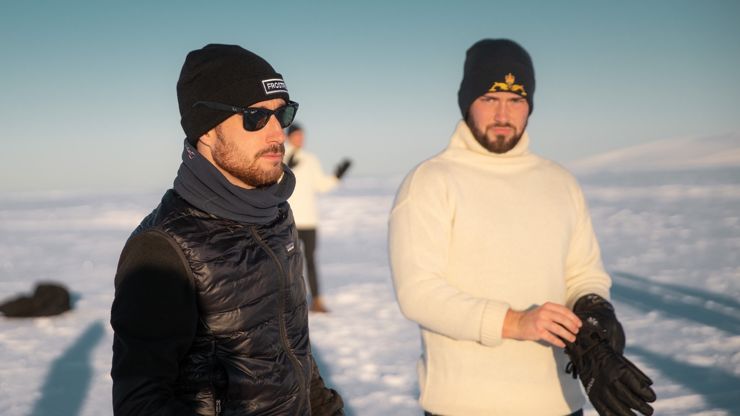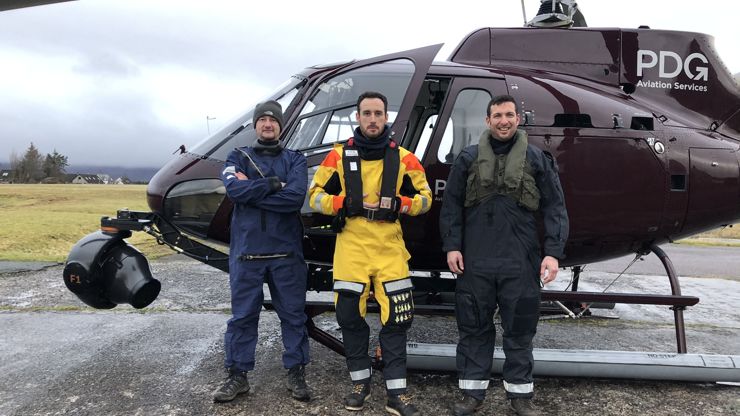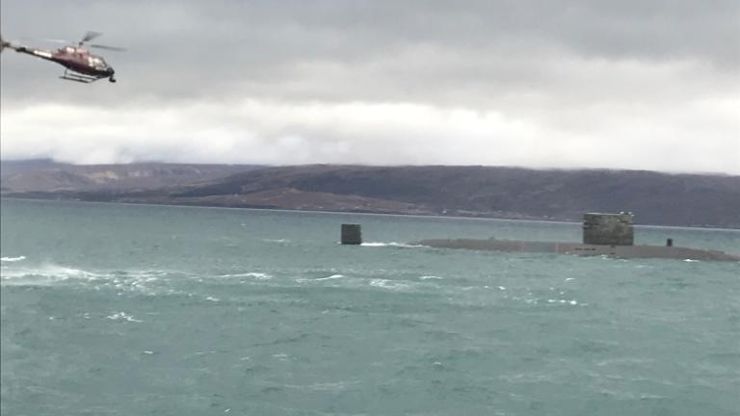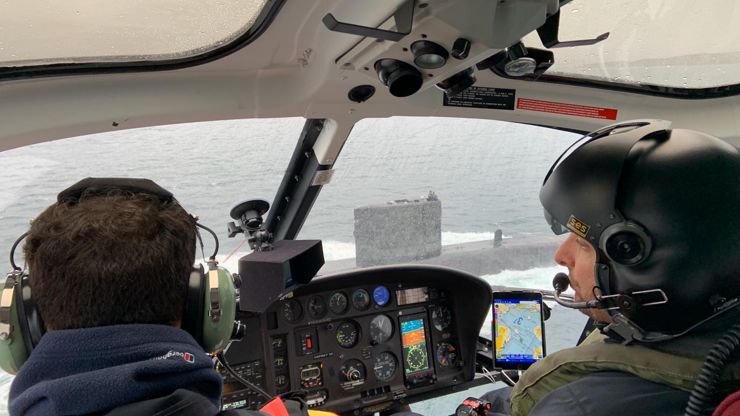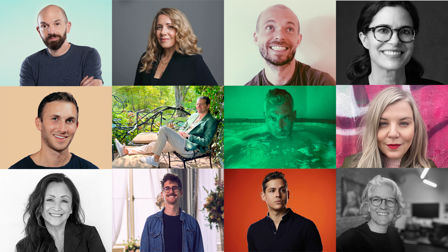Submarines, snow and secrecy; how to film a Royal Navy spot
Spindle director Greg Hackett's new Royal Navy film was a huge undertaking, not least due to the availability of the main character (a nuclear submarine) and the need for secrecy (which stretches to this interview, some of which needed to be redacted). Here, he reveals the challenges and triumphs of the year-long project.
When you received the script from Engine did you immediately know how you wanted to approach it?
When I received the script, I remember speaking to my EP, Miles [Nathan], both of us looking at each other and saying ‘they want to shoot a football scene on an ice field, with a submarine present…’. Let’s go for it. I’d previously shot four films with the Royal Navy and Engine, in 2018. They were in support of Ed Morris’ main TVC, Michael’s Story, and started as online content, so it was a real compliment to be asked back to pitch on this one.
From the initial script, it was clear that there were two main things to consider; redaction and scale.
From my initial shoots with the Navy, I learned that authenticity is paramount. They don’t want to ‘lead the witness’ too much, as Engine Creative Director, Orlando Warner puts it. I get this. It was the same with my time directing with The New York Times on their advertising work. It needs to feel genuine, not contrived; the best representation of the truth. The audience that could potentially sign up have a low tolerance for bullshit, so you have to approach the storytelling with this in mind.
From the initial script, it was clear that there were two main things to consider; redaction and scale. First, the redaction element is key to the through-line. Ultimately, everything a submariner does is secret, so some of the elements need to be withheld from the viewer. However, it’s a sensitive line because you don’t want to turn it into Mission Impossible and make it overstated and visually crass; it needs to feel real and authentic. In the end, having gone through every possible type of redaction, I came back to simplicity; pixilation and black bars.
Lens wise, I chose to shoot spherical rather than anamorphic, and I think this has added to the feeling of reality you get when watching it.
Second, was scale. There are two main characters; the hero and the sub. I’d argue the true main character is the sub itself. Both needed to be seen in a variety of places to give the best version of the life of a submariner can have while in the navy. Visually, I’m aware of what’s gone before, and knew I wanted to push the visuals to more of a composed and cinematic place to support the story of scale. That said, there’s a line of authenticity not to be crossed with the Navy, and pushing it too far into cinema was constantly talked about, making sure we were the right side of that. In the end, lens wise, I chose to shoot spherical rather than anamorphic, and I think this has added to the feeling of reality you get when watching it.
To make a non-actor feel comfortable and unaware is paramount if you want to capture those perfect moments; the laughs and smiles that come from experiencing something real.
Then, with the main Navy recruit, everything needed to be super-personal. In each scenario, I would set it up so a few different things could happen to keep him on his toes and catch him off guard. To make a non-actor feel comfortable and unaware is paramount if you want to capture those perfect moments; the laughs and smiles that come from experiencing something real.
Credits
powered by
- Agency Engine/London
- Production Company Spindle
- Director Greg Hackett
-
-
Unlock full credits and more with a Source + shots membership.
Credits
powered by
- Agency Engine/London
- Production Company Spindle
- Director Greg Hackett
- Production Service Need A Fixer
- Production Service LS Productions
- Grade Framestore/London
- Post Production No. 8
- Sound Design 750mph
- Assistant Producer Henry Davies
- Creative Christopher da Roza
- Executive Producer Miles Nathan
- Producer Duncan Bernard
- DP Adam Scarth
- DP Felix Schmilinsky
- Editor Tim Swaby
- Colourist Simon Bourne
- Colour Producer Chris Anthony / (Color Producer)
- VFX Lead Jim Allen
- Post Producer Barny Wright
- Sound Designer Sam Ashwell
- Creative Hugo Isaacs
- Creative Director Orlando Warner
- Producer Laura Melville
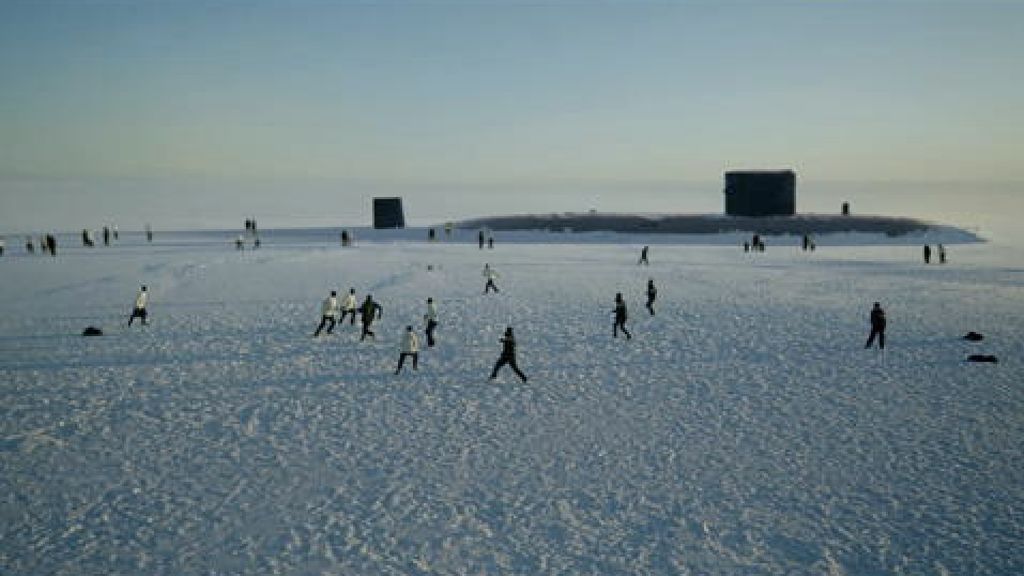
Credits
powered by
- Agency Engine/London
- Production Company Spindle
- Director Greg Hackett
- Production Service Need A Fixer
- Production Service LS Productions
- Grade Framestore/London
- Post Production No. 8
- Sound Design 750mph
- Assistant Producer Henry Davies
- Creative Christopher da Roza
- Executive Producer Miles Nathan
- Producer Duncan Bernard
- DP Adam Scarth
- DP Felix Schmilinsky
- Editor Tim Swaby
- Colourist Simon Bourne
- Colour Producer Chris Anthony / (Color Producer)
- VFX Lead Jim Allen
- Post Producer Barny Wright
- Sound Designer Sam Ashwell
- Creative Hugo Isaacs
- Creative Director Orlando Warner
- Producer Laura Melville
Above: Submariner, Hackett's just-released spot for the Royal Navy.
How much of the final film was in the initial script and how much did you have to adapt to the availability of the Royal Navy?
Ultimately, the Navy doesn’t stop for our film crew; it’s the military, so you just have to fit around them the best you can. That means you need to be adaptable and tenacious at each hurdle, and comfortable shooting with a tiny crew. That, again, comes from my documentary background; I know how to get the shot, even if it’s just me and a camera.
It’s the military, so you just have to fit around them the best you can.
To the producer’s credit, we did manage to hit all the scenes that were requested in the initial script; the football, the major city, the pool, the hands to bathe etc, but each of those had their separate problem-solving missions, the classic ones of limited time, resources and, potentially, no submarine. For instance, instead of [shooting in] a pub, I moved it to a top shot in a club to play into the redaction elements of the script - covering all but our hero’s eyes. However, there were only 10 background extras in the club so I shot it 13 times until I could build an impressive enough composite frame to represent a club scene.
Above: On location with the Submariner shoot.
What are the processes of working with a Royal Navy submarine?
It’s a nuclear-powered submarine so, as you can imagine, the security is tight. It took Duncan [Bernard], my producer, and Laura Melville, the agency producer, five rounds of security checks to get the camera equipment into the docked sub for the interior shots. Inside we were only allowed a crew of six, and eight hours [to shoot]. I had the Creative Director with me sharing a monitor and working our way through the sub. We were only allowed to film in three ‘sanitised’ areas. It was incredible, but also frantic. The DP, Adam Scarth, was removing light, rather than adding it, and just concentrating on getting contrast into the image.
You’re never in full control of anything and as a director you have to find the balance between visionary and observer to achieve the shots.
Ultimately, it’s a documentary approach to production. That’s as simple as I can put it. You’re never in full control of anything and as a director you have to find the balance between visionary and observer to achieve the shots. You fix your mind on the shots you want and then try hundreds of different ways to achieve it and, if you need to change, you find another way.
Royal Navy – Royal Navy: Louise's Story; Modou's Story
Royal Navy – Make A Difference
Royal Navy – Women
Royal Navy – Apprentices
Above: Hackett's previous work for the Royal Navy in 2018.
Can you tell us a bit about the casting; was the protagonist a current/former navy recruit and, if not, what was his rehearsal period like?
Well, that’s a bit of a funny one. Going back to the authenticity tip, it’s imperative for the Navy to only use real-life Navy recruits. For the last Navy films I spent a week on base casting and meeting recruits. It’s the way I like to work when it comes to real people. For this one, I got the agency on board for the same process.
Two days pre-shoot it was decided that the Navy couldn’t pull the requested hero out of his training and sent two lads we had not had eyes on up until to the first shoot day.
I went down and found my favourite four members and it was all going swimmingly until two days pre-shoot it was decided that the Navy couldn’t pull the requested hero out of his training and sent two lads we had not had eyes on up until to the first shoot day. I lost a little bit of sleep over that, but once I met Dev, our main guy, and saw how adaptable and friendly he was, we ploughed on. It is a strange feeling you have to get over pretty quickly though, especially as you’ve been seeing the film a certain way during pre-production.
There are some amazing locations and shots in the film; what were the logistics of shooting at sea/on a frozen landscape/on top of a sub?
The submarine is ultimately our hero and I wanted that to bring that to light through wide context shots throughout the piece. Each wide becoming a postcard for each place you’ll visit as a submariner. I only had one shot at capturing the exterior in action, and four hours to do so. For obvious reason, we couldn’t have the sub in multiple locations. So, for the four-hour window we had with it in Scotland, we decided to use a helicopter, rather than drone and I would DP myself from the sky, creating plates of the sub we could then build backgrounds around in the story.
I had an incredible helicopter pilot who was willing to get super-close to the sub to allow for some of the dynamic shots I wanted. It was fucking exhilarating.
To pull this off in such a short shooting window I compiled a set of 10 precise moments I needed from the sub and helicopter and marked them with scene numbers and a map for each movement. I worked super-closely with Rawden [De Fresnes], the First AD, who was in a fishing trawler, to then enact each one of these specific moves, making sure we were in the right place at the right time form the air. Luckily, I had an incredible helicopter pilot who was willing to get super-close to the sub to allow for some of the dynamic shots I wanted. It was fucking exhilarating.
Above: Hackett, [above, centre] gets the sub shots from the air.
Can you tell us a little bit about the sound design and the decision to have no music but this low level but quite oppressive sound?
It comes back to that constant question of authenticity, of not ‘leading the witness’ with overtly emotional melody. It’s ultimately a celebration of vignettes of life as a Submariner, so I felt it needed something not too ‘classic advertising’ to push the visuals and steer it clear of being too forced. I wanted it to feel completely different from everything else you see on TV. That means taking a risk and trying something new.
I wanted to simplify everything down to the most basic mechanical sounds the sub could make.
Standing in a sub, you notice the humming and the metallic nature of its contents. With this in mind, I wanted to simplify everything down to the most basic mechanical sounds the sub could make, and build it back up from there. We sat in with Sam [Ashwell] from 750MPH - who was incredible - to create a bed that builds and builds. I’ve actually taken the VO out altogether in the director’s cut.
What was the biggest challenge in pulling this film together?
Honestly, it’s been a year since the pitch to release, so there’ve been few, all of which I feel have made me a stronger director. First, I’d say holding onto the original vision for such a long period of time. I found that if you set your boundaries, elements can evolve nicely with time and space.
If stuff starts going down somewhere around the world, the sub just leaves and has to do its business.
Second, just getting hold of the submarine. Ultimately, if stuff starts going down somewhere around the world, the sub just leaves and has to do its business. We fell foul of Trump and Iran a couple of times. [Producers] Laura and Duncan deserve some sort of military medal for coordinating it. Their passion and tenacity kept us going through every knock-back.
And the biggest reward?
The client upped the media from a 30- to a 60-second TV spot, so we must have done something right.
)
